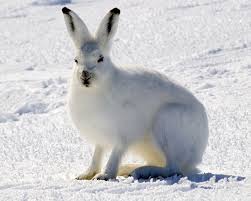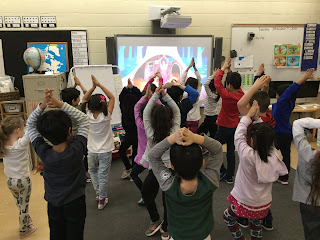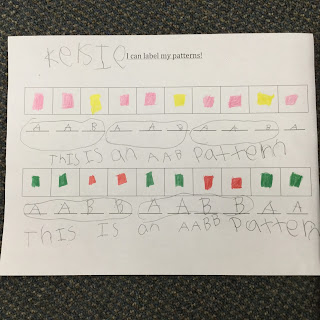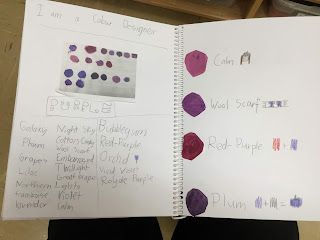We are studying how animals survive during the harsh months of winter. Animals need to avoid two problems: STARVING and FREEZING. Today we watched a video about some animals which migrate to warmer climates to better find food, to stay warm or to have babies.
During the fall, we often see flocks of Canadian geese traveling in a V shape. The geese take turns breaking the wind in the front while the ones behind save energy by drafting.
We made water colour pictures of this journey. Since the days are getting shorter, so we put a sunset in the background. The children used a white pastel to create a water resist technique, to separate the sky from the snow. Some also used it to create clouds. First, the students used big brushes and a "wet on wet" technique to make their background. The students first applied water, then introduced wet paint onto the paper without "painting." (The water on the paper blends the colours on its own.) We added only a hint of purple to our white snow to indicate shadows.
Once our painting were dry, the children went back and used "wet on dry technique" and tiny brushes to create the geese silhouettes in the sky.
Our buddies came this afternoon, to help us practice EXTENDING patterns. Our big buddies started a pattern and the grade one/twos extended them. Look in your child's communication folder to see what they did.
We also sent home our suncatchers. Find a window in your home that receives direct sun and enjoy the rainbows the crystal makes. We discussed how, when placed in a window, these decorations can protect birds from flying into the glass. Notice the beads show the pattern of the rainbow ROY GBIV!


























































